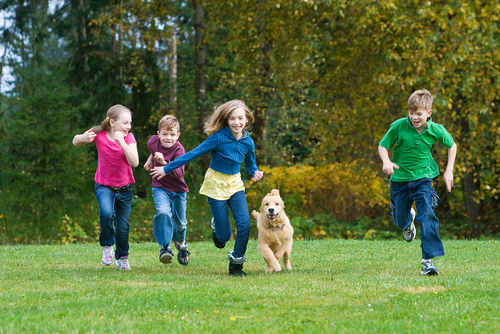
Exercise is positive prescription for child cancer survivors
By Canadian Chiropractor staff
Features Clinical Patient Care Dec. 12, 2013 — Childhood cancer survivors can be among active youngsters, reaping the benefits of exercise and youth sports by following post-treatment guidelines and keeping their doctors informed.
Dec. 12, 2013 — Childhood cancer survivors can be among active youngsters, reaping the benefits of exercise and youth sports by following post-treatment guidelines and keeping their doctors informed.
Exercise can even play a role during the treatment of some cancers,
according to the U.S. National Children's Cancer Society (NCCS).
Physical activity is known to increase energy, improve mood, boost
self-esteem, stimulate the immune system and reduce symptoms of pain,
diarrhea and constipation. Post treatment exercise can reduce the risk
of cardiovascular effects, low bone density and obesity, and overall
improve a child or teen survivor's quality of life.
"Physical
activity is important for pediatric cancer survivors' health and
emotional well being," said Pam Gabris, a nurse and the Beyond the Cure
coordinator for NCCS.
"Parents should work closely with their
child's doctors to gauge how much physical activity is right for their
child, and monitor exercise programs and athletic involvement to
maximize the benefits and monitor the child for late-term effects."
Gabris
cautioned, for example, that certain types of chemotherapy used in
treating childhood cancer may lead to heart disease, which could then be
aggravated by strenuous activity. Some survivors who have had adria
drugs (doxorubicin and adriamycin, for example) can put themselves at a
higher risk of heart damage by doing isometric exercises such as
pull-ups and bench presses.
But most children and teen cancer
survivors can follow the age-appropriate aerobic exercise
recommendations for the general population of the same age, according to
the American College of Sports Medicine, which developed exercise
guidelines for cancer survivors. Aerobics are fine for most, although
those with an increased risk of falling or bone fractures (such as
survivors with peripheral neuropathy or bone metastases) should consider
a non-weight bearing activity, such as riding a stationary bicycle.
Resistance exercise is also an important part of a post-treatment
fitness routine, and can be done safely by cancer survivors.
Some
treatment centres, like the Nationwide Children's Hospital of Columbus,
Ohio, even have in-house pediatric cancer exercise programs to help
survivors and children in remission regain strength and confidence. Such
programs are led by certified athletic trainers and focus on improving
flexibility, muscle strength, power, balance and agility.
For
more information about helping a childhood cancer survivor start an
exercise or sports program, visit Beyond the Cure at beyondthecure.org
Print this page